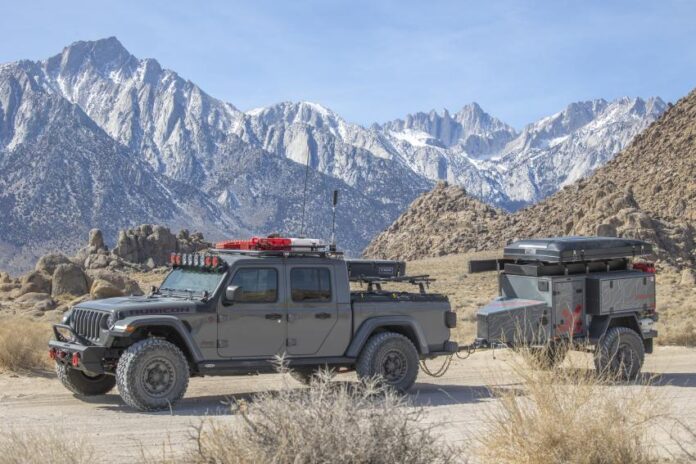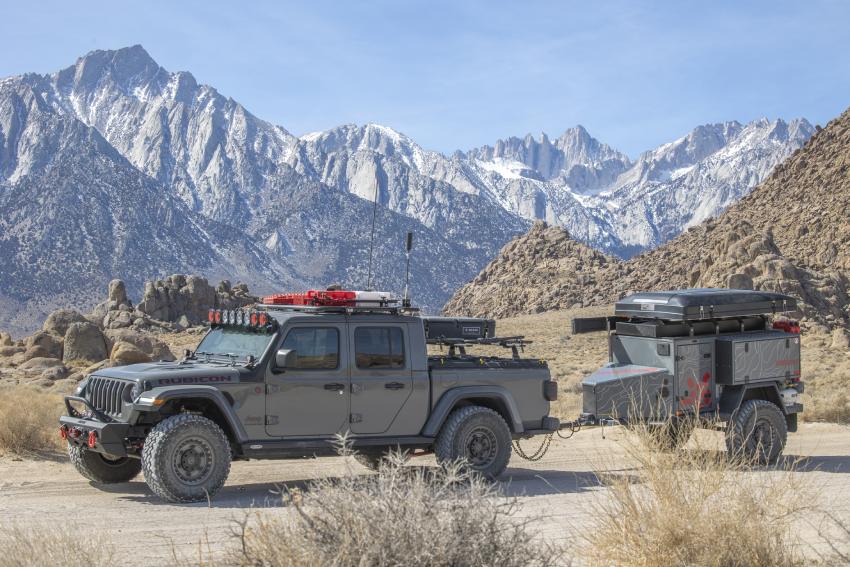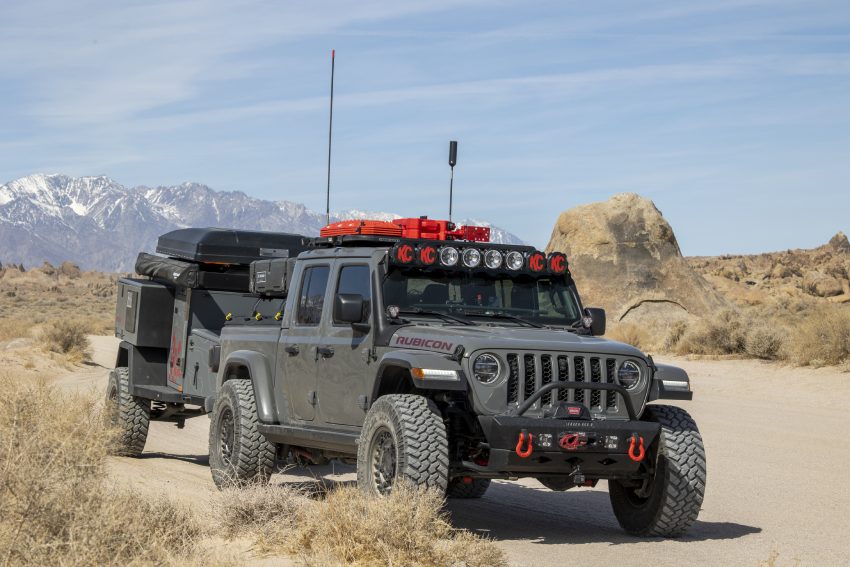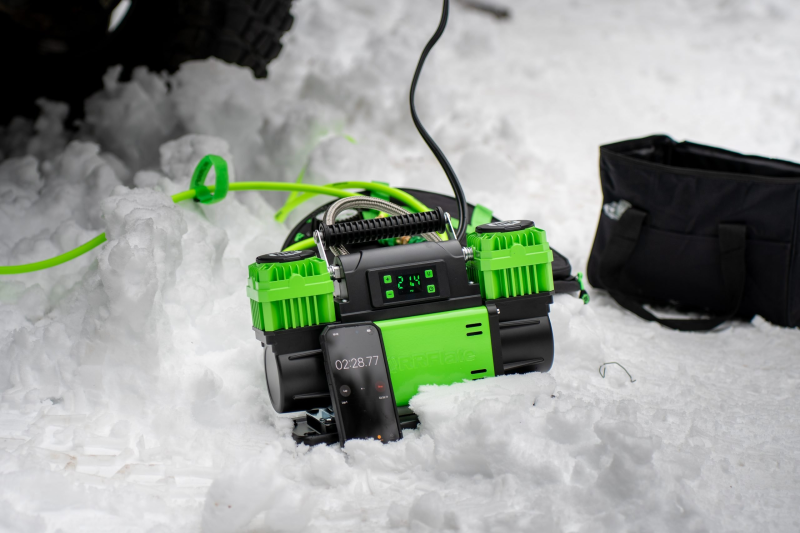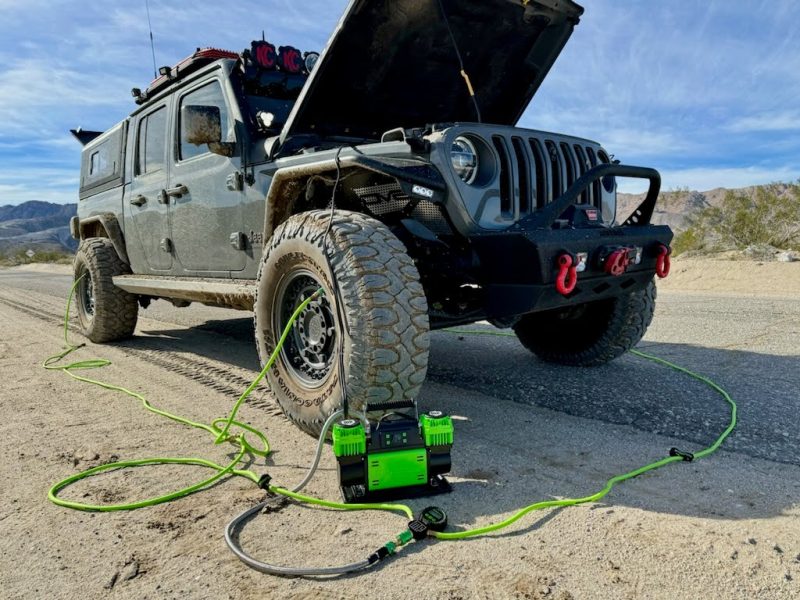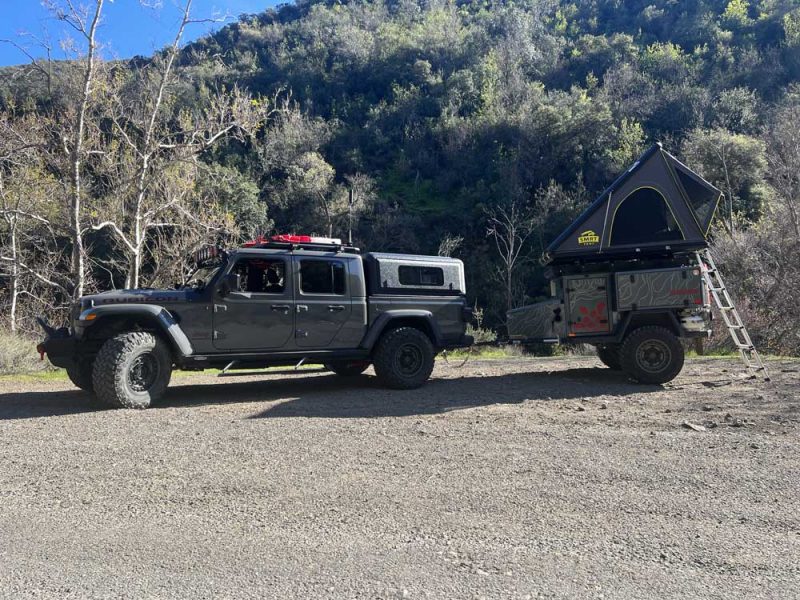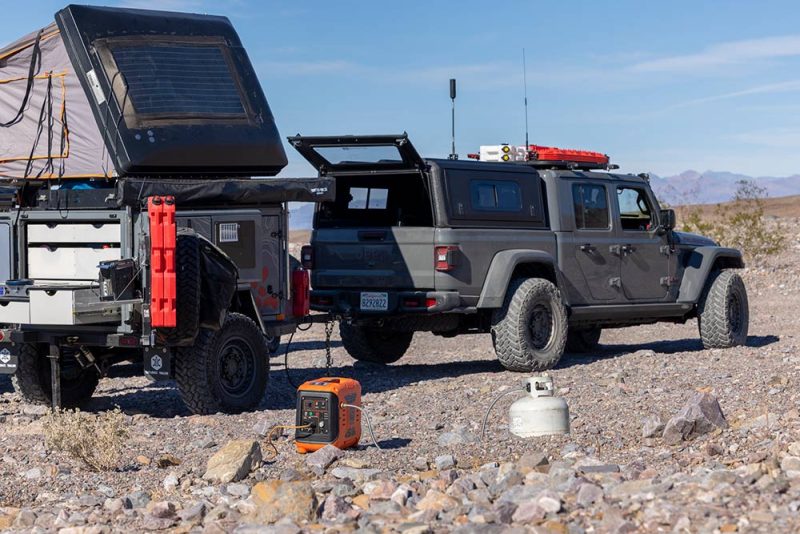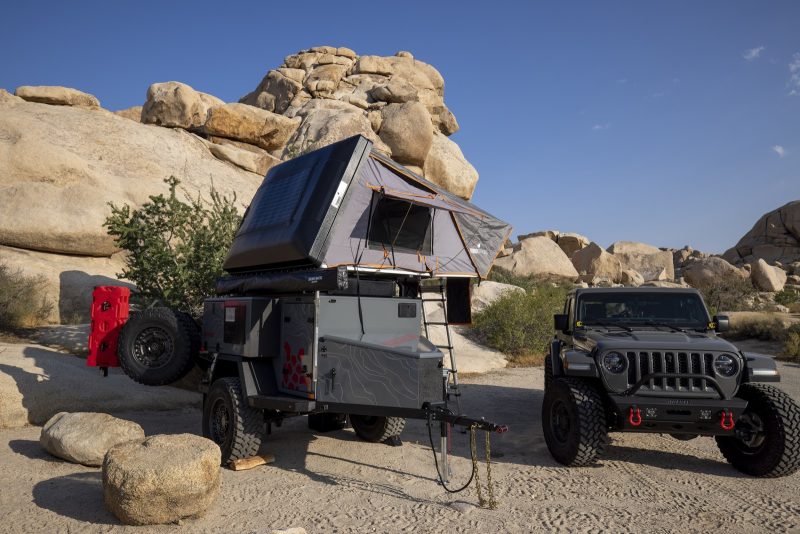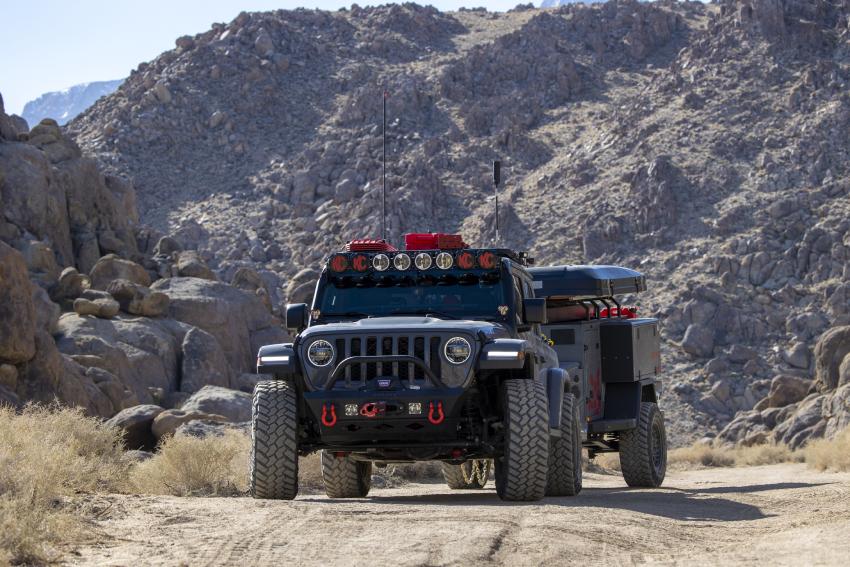Ever feel like your off-road adventures are limited by a cramped tent and gear left behind? Overlanding with a trailer lets you explore further and relax in comfort you just can’t get with a backpack. A trailer can transform any scenic spot into your personal base camp, letting you extend your trip and experience more of the wild on your own terms.
Imagine dominating dusty trails all day, then chilling out in your own private campsite at night, with a comfy bed and all the essentials you need. However, towing a trailer adds a new challenge to your overlanding plans. Don’t worry, we’ve got you covered!
This guide equips you with five essential tips you need to master overlanding with a trailer. From packing like a champ to navigating like a seasoned off-roader, we’ll get you hitting the trails with confidence. So, dust off your trailer, ditch the tent, and get ready to conquer more backcountry in comfort and style!
Table of Contents
- Packing and Loading Techniques for Overlanding With a Trailer
- Towing Safety and Driving Tips for Overlanding With a Trailer
- Navigating Off-Road Terrain When Overlanding With a Trailer
- Campsite Setup and Maintenance When Overlanding With a Trailer
- Emergency Preparedness and Contingency Planning When Overlanding With a Trailer
Packing and Loading Techniques for Overlanding With a Trailer
Packing a trailer for overlanding isn’t just about shoving gear in the back. It’s about creating a balanced, secure mobile home base that can handle the off-road adventure you crave. Below, you can find three essential techniques to master trailer packing and ensure a smooth, comfortable journey.
Imagine your trailer as a giant seesaw. An uneven load equals a wobbly ride, which is not ideal for conquering mountain passes. To maintain stability and prevent trailer sway, follow the golden rule: Heavier items go low and towards the front. This keeps your center of gravity closer to your vehicle, resulting in a smoother journey for you and your gear.
Loose cargo on bumpy trails spells disaster. To prevent unwanted shifting, secure everything with high-quality ratchet straps, bungee cords, or cargo nets. Bins, dividers, and creative ropework can further enhance organization and prevent gear from becoming a jumbled mess.
Avoid campsite chaos by organizing your gear for easy retrieval. Frequently used items like camp chairs, firewood, and a first-aid kit should be close to the trailer’s entrance for quick access. Consider dedicating a bin for all your culinary essentials and keeping a cooler stocked with drinks readily available.
Towing Safety and Driving Tips for Overlanding With a Trailer
Image Credit: MORRFlate
Hitching a trailer to your off-road rig opens a world of possibilities, but it also adds a new layer of responsibility. Safety comes first, so ensure you understand towing regulations for each state you visit. Government websites like the Department of Transportation or the local DMV can clarify weight limits, speed restrictions, and trailer brake requirements.
Now, let’s talk about mastering the art of towing with confidence. Increase your following distance to compensate for the longer stopping distance with a trailer. Apply brakes smoothly to avoid trailer sway, and take wider turns to prevent clipping obstacles.
Regular maintenance is equally important. Maintain proper tire inflation as listed on the trailer (usually on a sticker) to prevent blowouts. Inspect tires for wear and damage, replacing any compromised ones. Before every trip, conduct a thorough safety check of your trailer lights, coupling, and safety chains.
Always be prepared for the unexpected. For example, a flat tire can derail your overlanding adventure. That’s where MORRFlate’s TenSix PSI Pro Gen2 air compressor comes in handy.
This lifesaver boasts a powerful 10.6 CFM airflow rating, allowing you to quickly inflate even large trailer tires. Its compact size and rugged design make it the perfect off-road companion. The eye-catching green color ensures you’ll easily locate it in your gear, so you can get back on the trail in no time.
Navigating Off-Road Terrain When Overlanding With a Trailer
Conquering off-road terrain with a trailer adds a layer of complexity to your overlanding adventure, but the rewards are immeasurable. The key lies in meticulous planning and adapting your driving style.
Firstly, ditch the idea of conquering every rugged path. Research online resources and choose routes designed for towing, avoiding narrow or overly technical sections. Having a trusted spotter guide you through tight turns, tricky terrain, or obstacles with limited visibility is crucial. Their extra set of eyes ensures safe passage for both you and your trailer, preventing costly damage and delays.
Finally, master the art of off-road driving with a trailer in tow. Engage low-range gearing for superior control on inclines and uneven surfaces. Maintain a slow, steady pace to avoid losing traction, and choose lines that offer ample clearance for both your vehicle and trailer.
Campsite Setup and Maintenance When Overlanding With a Trailer
Transforming that scenic overlook into your own personal base camp is a core aspect of overlanding with a trailer. But don’t worry, you can easily ensure a smooth setup and maintain your mobile haven for a comfortable and relaxing stay by following our tips.
Finding the perfect campsite is key. Look for level terrain with enough space to comfortably maneuver and park your trailer. Uneven ground can disrupt your relaxation, so a little planning goes a long way. Utilize online resources or guidebooks to identify suitable campsites, or simply keep your eyes peeled for that ideal spot during your travels.
Once you’ve found your home away from home, it’s time to set up camp. Leveling your trailer is crucial for both comfort and stability. Use leveling blocks or jacks to create a flat surface for your trailer, ensuring a good night’s sleep and preventing unnecessary strain on your trailer’s frame.
Take a few minutes each day to perform quick checks on your trailer. Inspect trailer connections to ensure everything is securely fastened. Lubricate any moving parts to prevent wear and tear. Give your electrical systems a quick once-over to identify any potential issues.
Emergency Preparedness and Contingency Planning When Overlanding With a Trailer
Overlanding with a trailer takes you deeper into the wilderness, but venturing off the beaten path requires preparation for the unexpected. Bad weather or a mechanical breakdown can quickly turn a short detour into an extended stay, so be prepared for the worst and hope for the best.
Remember, a little mechanical know-how goes a long way, so consider brushing up on common trailer repairs before your trip. Pack essential tools and spare parts for roadside repairs and basic maintenance. This might include a lug wrench, jack, spare tire, and a basic tool kit to address minor issues, along with an air compressor, of course!.
Carry a well-stocked first-aid kit, a reliable flashlight with extra batteries, and enough extra water and non-perishable food to sustain you and your crew for a few days in case of unforeseen delays.
Finally, have a contingency plan. Research evacuation routes and emergency services available in the areas you plan to visit. Knowing the nearest hospital, tow truck service, or ranger station can be a lifesaver in a critical situation. Download offline maps of your chosen routes and consider investing in a satellite communicator for truly remote locations.
Disclaimer: Heads up: Clicking on our affiliate links and exploring our sponsored content helps us at no extra cost to you, and we only recommend gear we’re absolutely crazy about!



